Physical Address
304 North Cardinal St.
Dorchester Center, MA 02124
Physical Address
304 North Cardinal St.
Dorchester Center, MA 02124
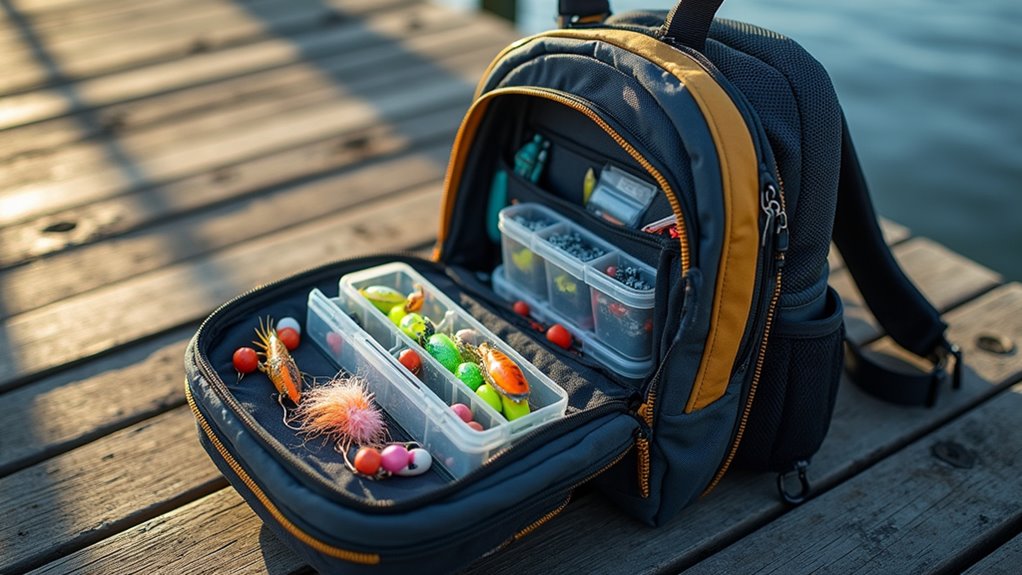
Keep your fishing adventures organized and hands-free, but is upgrading from your trusty tackle box really necessary?
You’re probably wondering if a fishing backpack is worth the investment when your old tackle box has served you well for years. It’s a practical question that depends on several key factors, from the length of your fishing trips to the amount of gear you typically carry. Before you make the decision, you should think about how your fishing style might benefit from a more mobile storage solution. Let’s explore what makes these specialized backpacks either a smart choice or an unnecessary expense.
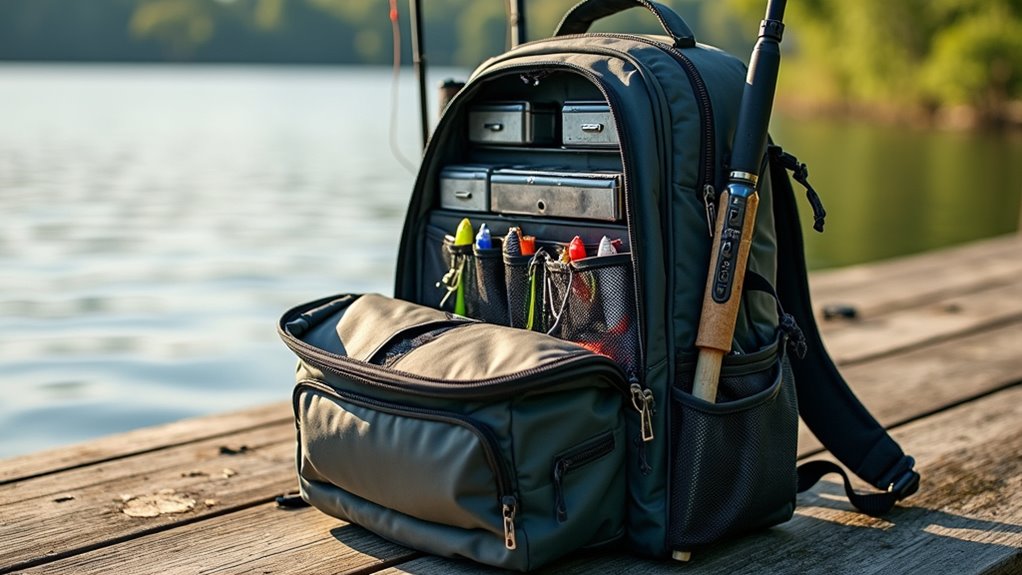
While traditional tackle boxes serve their purpose, fishing backpacks offer superior benefits that can transform your fishing experience. You’ll appreciate having both hands free for casting and traversing rough terrain, while your gear stays organized in dedicated compartments. The balanced weight distribution across your shoulders and back makes carrying heavy loads much more manageable. Popular models like Okee Sport Fishing are known for excellent portability and spaciousness.
These backpacks protect your equipment with water-resistant materials and secure closures, ensuring your gear stays dry and intact. Must-Have Camping Gadgets can also be useful additions to your fishing backpack.
You’ll find the ergonomic design, with padded straps and ventilated back panels, keeps you comfortable during long fishing sessions. Plus, they’re versatile enough to use beyond fishing – perfect for hiking, travel, or daily activities.
With quick-access pockets and built-in rod holders, you’ll spend less time managing equipment and more time actually fishing.
Selecting the right fishing backpack starts with knowing exactly which features will serve you best on the water.
You’ll want compartments designed specifically for tackle boxes and dedicated spots for essential tools like pliers and line cutters. Having varied fishing lines available in easily accessible pockets ensures you’re prepared for different fishing conditions. Look for waterproof materials and secure closures to protect your gear from the elements.
Comfort features shouldn’t be overlooked – padded shoulder straps and adjustable chest straps will help distribute weight evenly during long trips. A breathable back panel will keep you cool on warm days.
Consider specialized features that match your fishing style, such as built-in rod holders or cooler compartments for bait.
For convenience, choose a pack with multiple access points and side pockets, so you won’t need to remove it constantly to grab frequently used items.
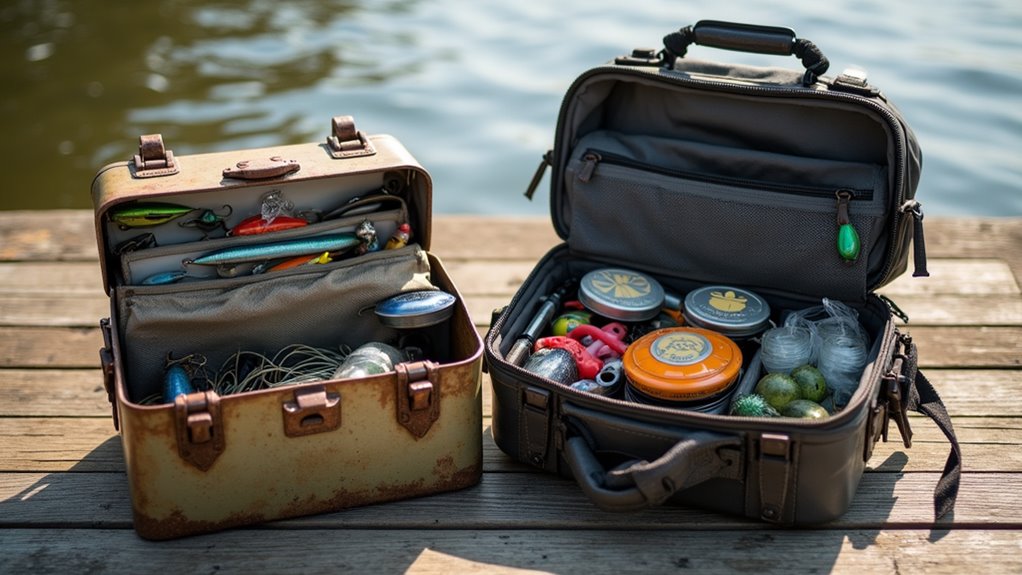
When choosing between traditional tackle boxes and fishing backpacks, you’ll need to weigh several key factors that impact your fishing experience. Both options have distinct advantages and situations where they excel.
They’re also ideal for fishing from boats where space is limited.
They’re particularly useful for situations requiring hiking or wading.
A well-organized fishing backpack can make the difference between a smooth day on the water and hours of frustrating gear searches. You should aim to sort your gear by category, keeping lures, hooks, lines, and tools separate for quick access and damage prevention. Weather-resistant materials help protect your valuable fishing gear from the elements.
Make the most of your backpack’s compartments by assigning specific spots for everything. Store larger items in the main section, while keeping tools in side pockets. Use tackle boxes with adjustable dividers for small accessories like hooks and sinkers. For soft plastics, plastic bins or zip-lock bags work well.
Place your most-used items in quick-access pockets and tool loops. Don’t forget to use external pockets for frequently needed lures and baits.
You can customize the interior with movable dividers to create a setup that perfectly matches your fishing style.
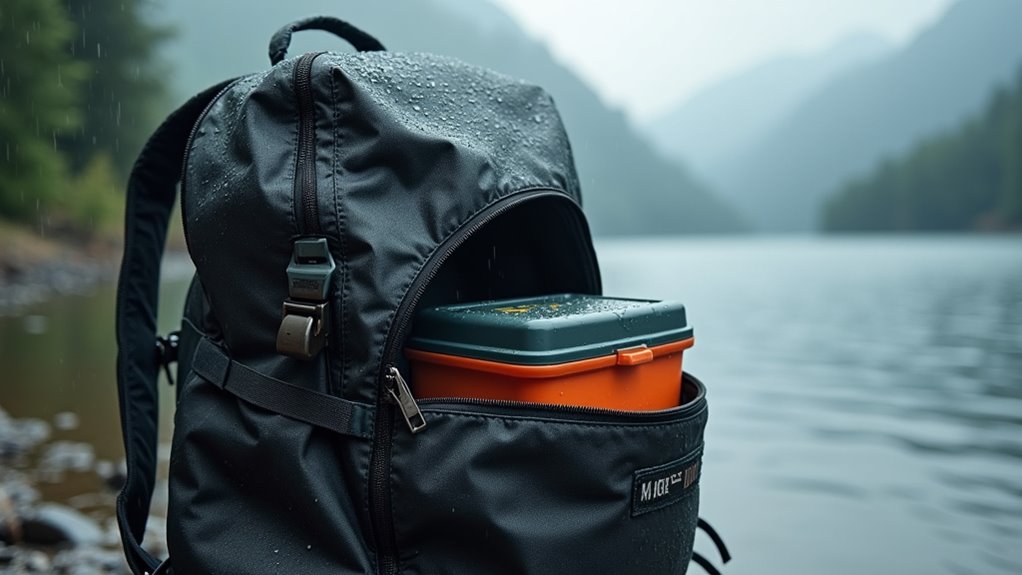
The harsh realities of fishing demand a backpack that can withstand nature’s worst. You’ll need protection from rain, splashes, and unexpected submersion while keeping your gear safe and dry. TPU-coated nylon construction, as found in premium models, offers exceptional water resistance for the most challenging conditions.
Fishermen need gear that fights back against Mother Nature, keeping equipment protected no matter what challenges arise on the water.
Modern fishing backpacks combine waterproof materials, welded seams, and reinforced components to create a durable companion for your adventures. A camping heater can provide valuable warmth and comfort during your outdoor fishing trips.
Spending long hours on the water demands a fishing backpack that won’t leave you sore and fatigued. You should prioritize features that provide all-day comfort, like ergonomic designs and padded shoulder straps that distribute weight evenly across your body.
Look for adjustable straps that let you customize the fit to your frame, preventing chafing and strain. A breathable back pad will help keep you cool and dry, while internal foam contouring reduces pressure points. Just like the Flyweight Packable Wader, modern fishing backpacks focus on innovative lightweight materials that won’t weigh you down.
Multiple pockets and built-in retractors keep your gear organized and easily accessible, so you won’t waste energy digging through your pack. Consider features like handwarmer pockets for cold weather and MOLLE webbing for attaching additional camping gear.
These comfort considerations will help you stay focused on fishing rather than dealing with discomfort.
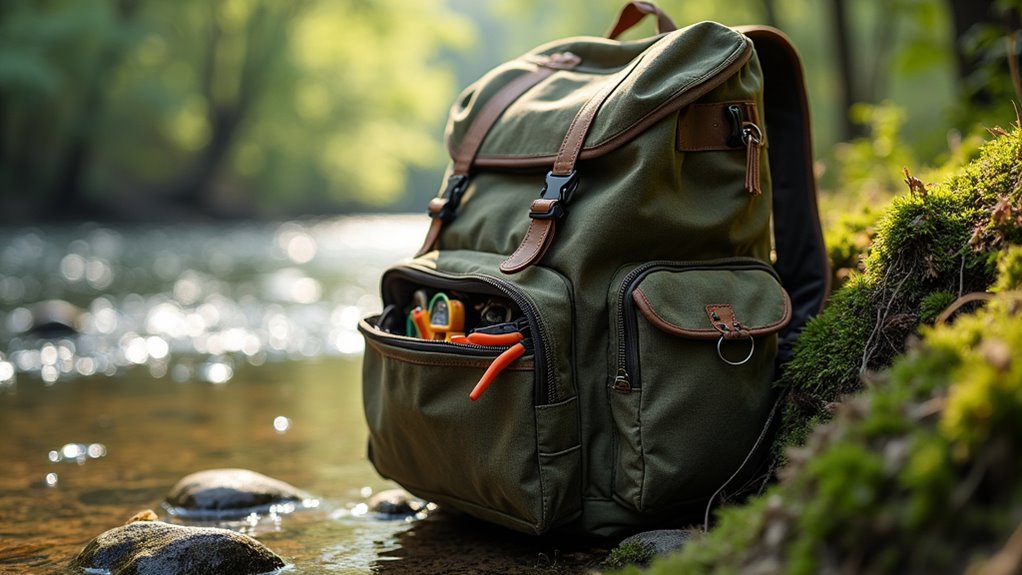
Making informed choices about your fishing pack starts with understanding your specific angling needs. Your fishing style, trip duration, and gear requirements will determine whether you’ll need a backpack, vest, or smaller pack option.
Select based on your most frequent fishing scenario rather than trying to cover every possible situation.
Your fishing style will ultimately determine if you’ll need a fishing backpack. While they’ll cost more than traditional tackle boxes, these backpacks can be worth their weight in gold for longer trips and complex setups. Consider your budget, comfort needs, and gear requirements carefully. If you’re spending countless hours on the water or hiking to remote spots, a well-chosen fishing backpack could be your best investment this season.